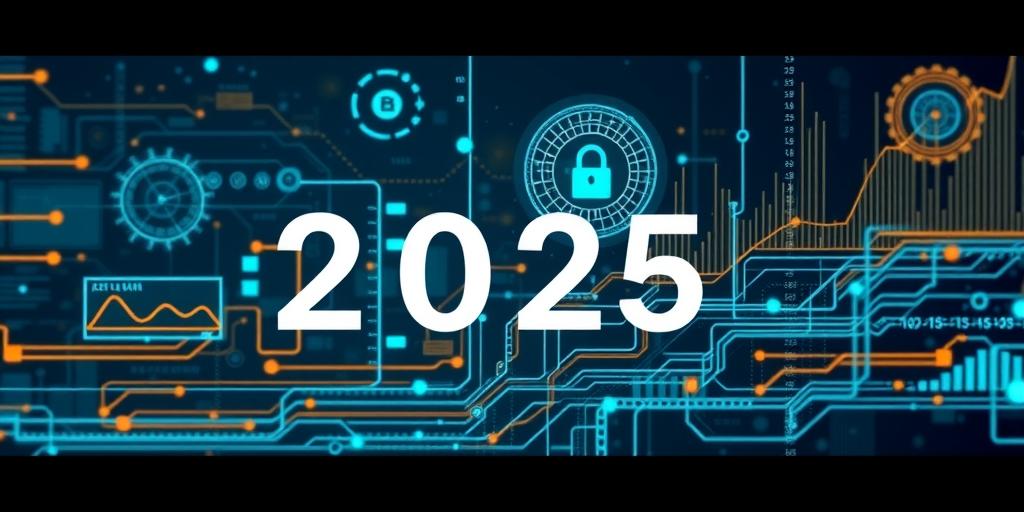The Future of Machine Learning Operations (MLOps) in 2025
Machine Learning Operations (MLOps) is rapidly evolving, transforming how machine learning models are developed, deployed, and maintained. As we look toward 2025, several key trends are poised to shape the future of MLOps. This article explores these trends, providing insights into what organizations can expect and how they can prepare.
1. Increased Automation
Automation is already a significant aspect of MLOps, but its importance will only grow. By 2025, we anticipate seeing more sophisticated automation across the entire ML lifecycle. This includes:
- Automated Feature Engineering: Tools that automatically discover and create relevant features from raw data, reducing the need for manual feature engineering.
- Automated Model Training: Enhanced AutoML solutions that can automatically train and optimize models for specific tasks, including hyperparameter tuning and model selection.
- Automated Deployment: Streamlined deployment pipelines that automatically deploy models to production environments, with minimal human intervention.
- Automated Monitoring and Retraining: Systems that continuously monitor model performance and automatically trigger retraining when performance degrades.
2. Edge MLOps
The deployment of machine learning models to edge devices (e.g., smartphones, IoT devices, embedded systems) will become increasingly prevalent. Edge MLOps involves:
- Optimized Models for Edge: Techniques for compressing and optimizing models to run efficiently on resource-constrained edge devices.
- Federated Learning: Training models collaboratively across multiple edge devices without centralizing the data, preserving privacy and reducing latency.
- Edge-to-Cloud Synchronization: Mechanisms for synchronizing models and data between edge devices and the cloud, enabling continuous learning and adaptation.
3. Enhanced Model Observability
As machine learning models become more complex and integrated into critical business processes, the need for comprehensive model observability will intensify. This includes:
- Real-time Monitoring: Tools that provide real-time insights into model performance, data quality, and potential biases.
- Explainable AI (XAI): Techniques for understanding and explaining how machine learning models make decisions, enhancing transparency and trust.
- Root Cause Analysis: Capabilities for quickly identifying the root causes of model performance issues, enabling faster remediation.
4. MLOps Platforms
Integrated MLOps platforms will become the norm, providing a unified environment for managing the entire ML lifecycle. These platforms will offer:
- End-to-End Tooling: A comprehensive suite of tools for data preparation, model training, deployment, monitoring, and governance.
- Collaboration Features: Enhanced collaboration capabilities that enable data scientists, engineers, and business stakeholders to work together more effectively.
- Scalability and Flexibility: Architectures that can scale to handle large volumes of data and support a wide range of machine learning frameworks and deployment environments.
5. Focus on Responsible AI
As machine learning models are increasingly used in sensitive applications, there will be a greater emphasis on responsible AI practices. This includes:
- Bias Detection and Mitigation: Tools and techniques for identifying and mitigating biases in data and models.
- Privacy-Preserving Techniques: Methods for protecting sensitive data during model training and deployment, such as differential privacy and homomorphic encryption.
- Ethical Considerations: Frameworks for addressing ethical considerations related to fairness, accountability, and transparency in machine learning.
6. Shift Left Security
Integrating security practices earlier in the MLOps lifecycle, often referred to as “Shift Left Security”, will become crucial. This approach ensures that security considerations are embedded from the initial stages of model development through deployment and monitoring.
- Secure Coding Practices: Implementing secure coding standards and conducting regular code reviews to identify and address vulnerabilities.
- Access Controls: Implementing robust access controls to protect sensitive data and prevent unauthorized access to machine learning models and infrastructure.
- Vulnerability Scanning: Performing regular vulnerability scans to identify and remediate security weaknesses in machine learning components.
Preparing for the Future
To prepare for the future of MLOps, organizations should:
- Invest in MLOps Platforms: Adopt integrated MLOps platforms that provide end-to-end tooling and collaboration features.
- Develop Automation Strategies: Implement automation across the ML lifecycle to improve efficiency and reduce manual effort.
- Enhance Model Observability: Invest in tools and techniques for real-time monitoring, explainable AI, and root cause analysis.
- Prioritize Responsible AI: Adopt responsible AI practices to ensure fairness, accountability, and transparency in machine learning.
- Upskill Teams: Provide training and development opportunities for data scientists, engineers, and business stakeholders to enhance their MLOps skills.
By embracing these trends and taking proactive steps, organizations can unlock the full potential of machine learning and drive innovation in 2025 and beyond.
